Check out some books by your tutor Fiona Veitch Smith … (click on the book covers to find out more)
 In this fifth session in my free creative writing course, we will be looking at writing characters. In creative writing we become, in a way, like God. In short stories, novels and poems, we construct a world then fill it with people who take on a life of their own. Iris Murdoch described a novel as ‘a fit house for free characters to live in’. How far a literary construct can have free will is an ongoing philosophical debate; more pertinent to writers is whether plot should follow character or the other way around.
In this fifth session in my free creative writing course, we will be looking at writing characters. In creative writing we become, in a way, like God. In short stories, novels and poems, we construct a world then fill it with people who take on a life of their own. Iris Murdoch described a novel as ‘a fit house for free characters to live in’. How far a literary construct can have free will is an ongoing philosophical debate; more pertinent to writers is whether plot should follow character or the other way around.
Character, Plot and Message
There are three kinds of stories: those that start from character, from plot or from message. If you start thinking about what a story is going to be about before you decide who’s going to be in it, you run the risk of populating your world with 2D puppets who are there simply to serve the plot. I made this mistake in a play once by inventing a character for the sole purpose of serving as a plot device. At the first staged reading, the audience reacted very badly to him. Why? Because he was a ‘type’ rather than a true person with likes and dislikes. When I started to flesh him out a bit, he began resisting the role I was forcing him into. I decided to let him lead me, and the plot developed in a different way from what I’d first envisaged, but it was more true to the character and resulted in a better play. That being said, there are very successful plot-driven novels, particularly thrillers, where the ‘who’ is not as important as the ‘what’. Take for example the John Grisham legal novels where one young, enthusiastic lawyer blends into the next, carried along by a breathtaking storyline.
A message-driven story is one where a writer starts with an idea or theme (enviromentalism, religion, anti-war etc) then crafts a plot and populates it with types who will best illustrate the message. This runs the danger of becoming a sermon. Don’t get me wrong, there’s nothing wrong with ideas, but beware of writing something simply to convert your reader to a cause. I was very disappointed to read State of Fear by Michael Crichton which was no more than a thinly veiled manifesto for the anti-global warming lobby. Compare this to the brilliantly successful Jurassic Park which turned the spotlight on the ethics of zoos, genetic engineering and environmentalism while still honouring the reader’s right to a good story.
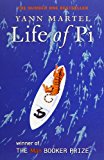 A character-based story is when the characters are so memorable and well-drawn that the story would not exist without them. Think for example of Christopher in The Curious Incident of the Dog in the Night-time, Pi in Life of Pi or Scarlett in Gone with the Wind. The stories surrounding these characters are so much a product of their own personalities that no-one else could fill their shoes. The one danger with character-driven novels is that sometimes they become so introspective that nothing much happens. This is particulary dangerous in 1st person or stream of consciousness texts.
A character-based story is when the characters are so memorable and well-drawn that the story would not exist without them. Think for example of Christopher in The Curious Incident of the Dog in the Night-time, Pi in Life of Pi or Scarlett in Gone with the Wind. The stories surrounding these characters are so much a product of their own personalities that no-one else could fill their shoes. The one danger with character-driven novels is that sometimes they become so introspective that nothing much happens. This is particulary dangerous in 1st person or stream of consciousness texts.
The key of course if to have all three elements in balance. Different writers start from different points and some are more naturally plot-inclined than character or message. There’s nothing wrong with this. But there’s also no reason why you can’t have a great plot, well-drawn characters and still have something useful to say. Simon Morden’s The Lost Art has achieved it (read Simon’s Crafty Writer guest post about getting feedback to improve your work).
Exercise 16:
Think of your own writing. Are you plot, character or message driven? How can you try to bring these elements more into balance?
Starting from Character
That being said, I still think the best way to write is to start with character. Ursula LeGuin says she saw two people walking across a desolate landscape and asked herself: ‘Who are these people? What is their relationship? How did they get there? Where are they going?’; the answers to those questions resulted in the classic Science Fiction novel The Left Hand of Darkness. On a personal level, my children’s book Donovon’s Rainbow emerged after I read in the bible that the second time Noah released a raven and a dove from the ark, the dove came back but the raven didn’t. I asked myself ‘why?’. What happened to the two birds when they were away from the ark? What was their relationship? Were they friends? Enemies?
Exercise 17:
Find some pictures of people. Beautiful people, interesting people, ugly people – it doesn’t matter. Ask yourself who they are. How did they get there? Where are they going next? What is their relationship to one another? How did they first meet? Do they like each other? Do the answers suggest the beginning of a story or a poem? If so, start writing.
Knowing your character from the inside out
Some writers draw up entire dossiers on their characters before they even start to write. They know where they were born, whom they first kissed and how many fillings they have in their teeth. I don’t work like that, but I do believe you need to know more about your character than what appears on the page. If you don’t know who your character is and how he or she might react in a certain situation you will never be able to create believable ’3D’ people. Like all ‘real’ people, your character will have had a past that took place before the book began. The experiences of the past will affect how he or she reacts now.
Exercise 18:
Take one of the characters from Exercise 17 or, if you prefer, a character from something you are already writing, and ask yourself what are their best and worst memories. How do these memories affect them now? What would trigger these memories? A song? A smell? A phrase? An object? Now write a short scene in which a memory is triggered.
As we’ve already discovered in bringing your writing to life, it is always better to show instead of tell. Here is an exercise to help your character show you, rather than tell you, what type of person they are:
Exercise 19:
Ask your character to empty their pockets or their bag onto a table. What comes out? Why does your character have those things with them? Now let your character choose an object and ask them to tell you why it’s important to them. It would be useful to let them speak in first person, that way you can hear their voice.
Motivation
The link between your characters and the plot (what happens to the characters in the course of your story) is motivation. Have you ever read something and thought: ‘they wouldn’t do that; it’s just not believable.’ What you’re noticing is a disparity between the way the author has revealed the character to you and your conclusions about how they should behave. The fault will either be with the characterisation or with the situations the writer has chosen to express that characterisation. In drama the first thing an actor does when getting to know a character is to discover his or her motivation. What makes the character tick? Why do they act a certain way? How would they react in certain situations? What do they want? This last question is the most important. A character who doesn’t want anything, even if it’s just to be left alone, will be useless to a writer. At the start of your story you must determine this central question and allow the plot to develop from there as the character pursues their desire. This is where action follows character. This will be the arc of your story.
Exercise 20:
Take the character you worked on in Exercise 19 and ask yourself what he or she wants. Is this ‘want’ big enough to hang an entire plot off? What might he or she do to achieve their goal?
Conflict
 Conflict is what builds drama in a piece of writing. It stems from the person or thing that stands between your protagonist (the primary character) and their goal. Conflict may be external or internal. In The Silence of the Lambs for example, Clarice wants to find the killer and save his latest victim, but she also wants to prove to herself and everyone else that she’s not just some hick from a country backwater. The conflict comes in terms of time running out for the latest victim, the wiles of the killer and Clarice’s self doubt. Hannibal Lecter provides further conflict because Clarice needs him to find the killer, but, by doing so she risks him exposing her hidden fears and insecurities about her background. In the best sort of drama, which this is, conflict is multi-layered.
Conflict is what builds drama in a piece of writing. It stems from the person or thing that stands between your protagonist (the primary character) and their goal. Conflict may be external or internal. In The Silence of the Lambs for example, Clarice wants to find the killer and save his latest victim, but she also wants to prove to herself and everyone else that she’s not just some hick from a country backwater. The conflict comes in terms of time running out for the latest victim, the wiles of the killer and Clarice’s self doubt. Hannibal Lecter provides further conflict because Clarice needs him to find the killer, but, by doing so she risks him exposing her hidden fears and insecurities about her background. In the best sort of drama, which this is, conflict is multi-layered.
Exercise 21:
Now that you’ve determined what your character wants, ask yourself what stands in his or her way. Try to unearth multiple layers of conflict through other characters (easily achieved by giving your protagonist and antagonist opposing goals), external situations outside of their control (a fire, a storm, a traffic jam etc) and an inner conflict stemming from what you discovered about their fears in Exercise 18.
Wow, you’ve got more than enough now to create a well-rounded, conflicted character who can propel a plot forwards. So what are you waiting for? Get writing!
Next week’s creative writing course topic is all about writing dialogue. See you then.
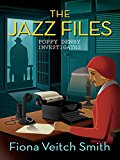

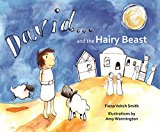
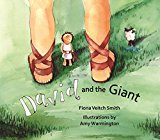
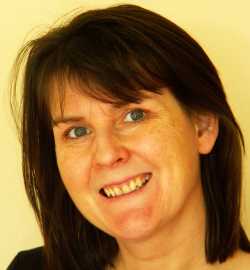 Welcome to The Crafty Writer's free online creative writing course, presented by Fiona Veitch Smith, a freelance journalist, editor, author, playwright, screenwriter and writing teacher. I hope that you'll see a dramatic improvement in the quality of your writing as you work through this course.
Welcome to The Crafty Writer's free online creative writing course, presented by Fiona Veitch Smith, a freelance journalist, editor, author, playwright, screenwriter and writing teacher. I hope that you'll see a dramatic improvement in the quality of your writing as you work through this course. 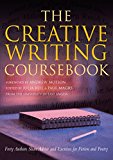
When writing characters, how can you avoid telling every single detail about them in one paragraph?
Hi Selah, just simply don’t do it. You already know it’s a no-no. So just choose a couple of distinguishing features and mention those. It’s also good to include your description as part of the action of the scene. eg ‘He stood there, his bulk filling the doorway; his lazy brown eyes lingering on the two women as they spoke.’ Or use a comparison: ‘he was a young Elvis Presley, cast out of time’. In my latest Poppy Denby book I’m writing, Poppy is looking at the photograph of the murder victim. I say ‘Poppy traced her finger around the profile of a young woman in her mid-twenties, who reminded her a little of Virginia Woolf’.
Hi, your site is absolutely amazing. Thanks for letting us writers know how to describe a character in a good way. I’ve always been terrible at describing characters, and your comment just saved my novel’s life. I’m excited to learn more from your site.
You’re most welcome, Amaya. Good luck with the rest of your novel!